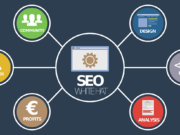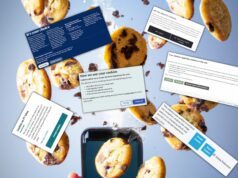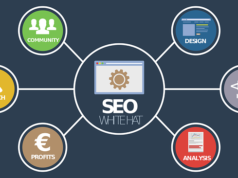Advertising has changed significantly since the days of Mad Men. With the changing technological landscape and a more globalized economy, businesses have shifted how they speak to consumers.
Today, advertising companies use messaging on a multitude of devices; smartphones, TVs, magazines, smart watches. There is a huge variety of opportunities and there is a lot more coming!
At Venuiti, we find this pretty exciting. We aren’t just sitting around waiting for the future to come, we are preparing for it today, looking for ways to reinvent the paths this business will take. Anticipating the future is part of our DNA. We have been ahead of the game since we were founded, and continue to strive toward that goal.
Here are the top 5 big changes you will see to the marketing industry by 2030:

1. Data ownership transfer
Currently, big organizations have control over a lot of user data. This data is implicitly shared by users in exchange for free services (such as Facebook and Google). As data collection evolves and users become more aware of the immense value their data provides, it is predicted that users will ‘sell’ their data to companies if they wish to use it. No longer will there be an implicit agreement, it will be a written contract. We can see this shift happening even today as we enter a new era of data. In order to remain competitive and use data to deliver targeted messaging, advertisers may have to purchase data.
2. Artificial Intelligence
AI and chatbots will revolutionize how we talk to consumers. Artificial intelligence today is far more advanced than it was even 5 years ago. Through machine learning and ever more powerful computers, AI is predicted to grow exponentially over the next decade, revolutionizing the customer service experience. No longer will individuals wait on hold for half an hour and try to explain their issues. Instead, sophisticated chatbots – which will be nearly indistinguishable from humans – will be able to answer queries in real-time. Each customer interaction will provide more data from which the AI will learn and provide better answers. These bots could be used to deliver personalized content to a variety of prospects.


3. Personalized messaging
Currently, most notifications are sent out en-masse. Companies have a master list and they communicate the same message to all of these customers. In some cases, these messages are slightly personalized, such as by adding the customer name at the beginning of the email. However, these attempts at personalization are transparent to the vast majority of customers. In the future, notifications will truly be personalized. There will be comprehensive data available about each customer and – in conjunction with supercomputers and AI – companies will be able to deliver truly personalized notifications.
4. Internet of things
With the widespread adoption of the internet of things, everything will change. Even today there are high-end thermostats, lights, and fridges which can be controlled through the internet. In the future, integration between products and services will be standard and everything will be connected. Users will be able to manage all of these tools through a central hub, providing businesses with opportunities to purchase meaningful data. Take this for an example: A user runs out of apples in their fridge. The fridge ‘knows’ that this user likes to eat apples regularly – based on the fact that apples are entered into the fridge regularly. The grocery store that the user goes to receives a notification that this person is out of apples. The grocery store then delivers a notification to the user through the fridge. The next time the user goes to the fridge they are told that they are out of apples and that there is a deal on apples at the grocery store. Processes such as these will become standard and change the way firms communicate with consumers.


5. Virtual Reality and Augmented Reality
Virtual reality and augmented reality (VR/AR) technological development is just beginning. Just a number of years ago these technologies were confined only to the richest of consumers. Then, Google came out with its Google cardboard, allowing users are now able to see the wonders of VR for under $20. However, this experience is still only touching the tip of what VR/AR can really do. In the future, VR/AR will be everywhere. You will not just see a movie – you will take part in it. Instead of delivering recorded ads to their prospects, companies will be able to deliver real experiences, truly showing users what their product or service provides. VR/AR will also be used for customer services as there will be holographic artificially intelligent chatbots who will be able to answer customer queries.
In order to be at the top of the pack, it is vital to understand future trends. Work with Venuiti and let us help you stay not one, but ten steps ahead of the rest.

With any business relationship, your outsourcing company is your partner – not your enemy, and it helps to work with, not against each other. Based on our experiences at Venuiti, maintaining a well-communicated project ensures a healthy business relationship. Make sure you apply these tips in your next project and you’ll ensure a smooth and successful outcome.

















